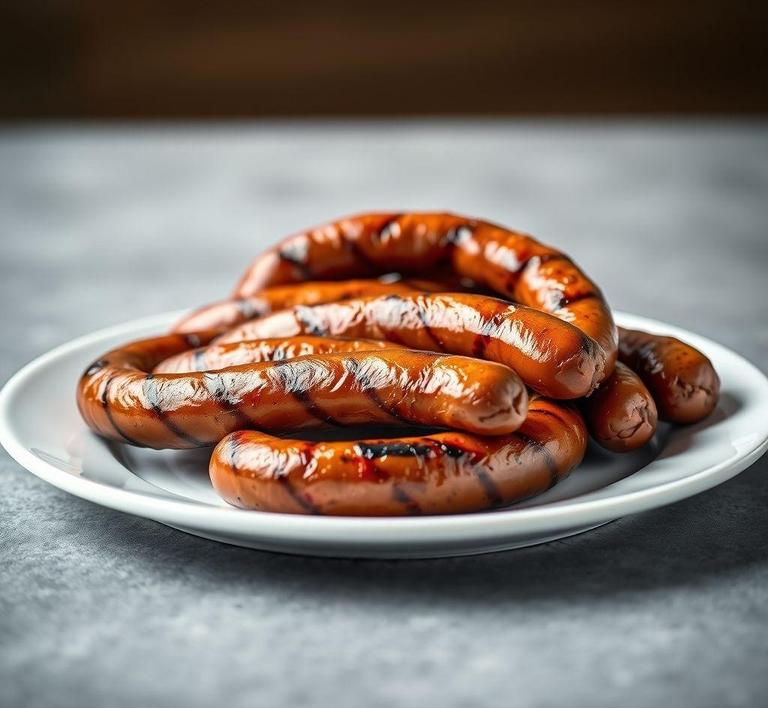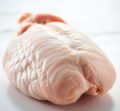If you’ve ever found yourself with a batch of boerewors that you can’t finish in one go, you may be wondering whether it’s safe to refreeze it. Well, you’re not alone! Refreezing boerewors can be a bit tricky, but with the right knowledge, it’s totally manageable. In this guide, we’ll walk you through the ins and outs of refreezing boerewors, from preserving its flavor and texture to ensuring food safety. Whether you’re looking to save some for later or extend the shelf life of your favorite South African sausage, this guide has you covered!
Can You Refreeze Boerewors?

Boerewors, the iconic South African sausage, is a beloved dish in many households. Made from a blend of minced beef, pork, and spices, this sausage carries a rich cultural history, offering a delicious burst of flavor with every bite. But what happens when you find yourself with leftover boerewors? Can you safely refreeze it, or will it lose its essence and flavor?
The short answer is: yes, you can refreeze boerewors, but with certain considerations. Freezing and refreezing meat, especially sausages like boerewors, can be a bit tricky because the process affects its texture, flavor, and overall quality. The safety of refreezing boerewors largely depends on whether it was thawed properly and how long it has been stored in the refrigerator. The key concern is ensuring that the sausage hasn’t been left at an unsafe temperature for too long during the thawing process. Refreezing boerewors after it has been thawed and left out at room temperature for more than 2 hours is not recommended due to the risk of bacterial growth.
However, if the sausage was thawed in the refrigerator, refreezing it within a day or two is relatively safe, provided you handle it with care. The freezer itself doesn’t pose a health risk, but mishandling can affect the quality of the meat. Now that we know it’s possible to refreeze boerewors under the right conditions, the next step is understanding how to do it correctly.
How To Refreeze Boerewors?
Refreezing boerewors may seem like a simple task, but there are steps to ensure the sausage retains its quality. Here’s a detailed guide to refreezing boerewors properly:
-
Check the Storage Time
Before even considering refreezing, make sure your boerewors hasn’t been sitting in the fridge for more than a couple of days. If you’ve had the sausage thawed for more than 48 hours, it’s better to consume it immediately or discard it. Proper fridge storage is essential to avoid contamination and spoilage.
-
Inspect the Sausage for Quality
If you’re dealing with cooked boerewors, ensure it hasn’t been left at room temperature for too long. If it smells off, or the texture is mushy and slimy, then it’s best not to refreeze. These are signs of bacterial growth. Only refreeze boerewors that is still fresh and safe to consume.
-
Wrap it Well
If the boerewors has been thawed and you plan to refreeze it, be sure to wrap it tightly in plastic wrap or aluminum foil. This helps prevent freezer burn, which can ruin the flavor and texture. Consider using freezer bags with as much air removed as possible. Vacuum sealing works best because it removes air and helps preserve the quality of the meat.
-
Label and Date
To keep track of how long your boerewors has been in the freezer, always label the package with the date it was refrozen. This will help you monitor how long it has been stored and avoid keeping it too long. Ideally, it should be used within 1-2 months.
-
Use the Right Freezing Temperature
Ensure that your freezer is set at 0°F (-18°C) or lower. This is the optimal freezing temperature to keep the boerewors fresh. Freezing the meat at higher temperatures might not keep it frozen enough to preserve its integrity.
-
Thawing Before Cooking
When you’re ready to cook your refrozen boerewors, make sure to thaw it in the fridge overnight, not at room temperature. Rapid temperature changes can affect the texture and create a breeding ground for harmful bacteria.
Quality Impact
Refreezing boerewors can have a noticeable impact on both its texture and flavor. The longer meat is frozen and thawed, the more moisture it loses, which can affect the juiciness and tenderness of the sausage. When refrozen, the sausage may become drier, and its flavor might become less vibrant due to the breakdown of fats and oils during the freezing process. Here are the primary quality impacts:
-
Texture Changes
When meat freezes, the water inside the cells expands and forms ice crystals. These crystals can rupture cell walls, leading to a change in texture once the meat is thawed. For boerewors, this could mean the sausage becomes more crumbly or dry. The casing might also lose its firm, snap-like quality, and the sausages might feel a little mushy or tough when cooked.
-
Flavor Deterioration
Freezing can dull the rich, savory flavors of boerewors, particularly the spices that make it unique. While it may still taste good, it may not have the same depth and freshness as a freshly made batch. Additionally, any oxidation or freezer burn caused by improper sealing can cause the sausage to develop a stale, off taste.
-
Moisture Loss
Every time meat is frozen and thawed, it loses some of its moisture. With boerewors, this could result in a less juicy, less flavorful sausage. It may still be safe to eat, but the texture won’t be as plump and tender as it once was.
-
Fat Breakdown
Boerewors contains a decent amount of fat from the blend of beef and pork. Freezing and thawing can cause some of the fat to break down, leaving the sausage slightly greasy or dry. The fat is essential for providing flavor and keeping the sausage juicy, so its degradation may lead to a less satisfying eating experience.
Refreezing boerewors is certainly possible, but it requires some attention to detail to ensure the meat stays safe and retains as much quality as possible. If you’ve thawed it properly and plan on refreezing, just make sure it’s wrapped tightly, stored in a properly functioning freezer, and used within a reasonable time frame.
While the flavor and texture might not be as pristine as when it was first made, if handled with care, refrozen boerewors can still make for a delicious meal. For the best results, try to avoid refreezing more than once and consume it within a month or two of its initial freezing. That way, you can ensure that the sausages retain their iconic taste and juiciness, keeping the spirit of boerewors alive in your kitchen, even if it’s been through the freezer a couple of times.
Is It Safe To Refreeze Boerewors?
Refreezing food, especially meats like boerewors, is a subject that requires careful consideration due to the potential risks involved. Boerewors, a traditional South African sausage made from minced beef and spices, can be refrozen-but only under certain conditions to ensure its safety and quality.
The core principle behind freezing or refreezing meat revolves around maintaining its temperature and avoiding prolonged exposure to the "danger zone" (between 40°F and 140°F or 4°C and 60°C), where bacteria can multiply rapidly. When boerewors is thawed, the outer layers warm up, making it a fertile ground for bacterial growth. If it is left in this state for too long before being refrozen, the risk of foodborne illnesses increases. However, if boerewors was frozen while still fresh, handled properly, and thawed safely in the fridge (not at room temperature), refreezing can be done with minimal risks, albeit with some considerations for texture and flavor.
It is important to remember that boerewors, like most sausages, may undergo some changes in quality once it has been frozen and thawed, and even more so if refrozen. Freezing can cause ice crystals to form in the meat’s fibers, leading to moisture loss, which can result in a less juicy, slightly rubbery texture once it’s cooked. But if done correctly, with proper care, refreezing is generally considered safe.
Signs That Boerewors Should Not Be Refrozen
Despite the possibility of refreezing boerewors, there are certain signs that indicate it’s better to avoid it. Refreezing improperly stored or thawed boerewors could lead to compromised safety and quality.
- Off-Smell: If boerewors has an unpleasant or sour odor, it could be a sign that bacteria have started to grow, indicating that it should not be refrozen. A good rule of thumb is: if it smells off, it’s better to throw it away.
- Excessive Ice Crystals: While some ice crystals are normal in frozen food, an excessive amount can indicate that the boerewors was previously frozen and thawed multiple times, or it wasn’t stored properly. This compromises both the safety and taste of the sausage.
- Visible Discoloration: When boerewors is frozen, it may lose some of its vibrant color, turning a little duller. However, if the sausage shows green, gray, or brown patches, it could be a sign of spoilage or freezer burn. This is a clear indicator that refreezing is not safe.
- Soft or Slimy Texture: If boerewors has a soft, slimy texture after thawing, it means it has been exposed to warmer temperatures for too long. This makes it unsafe to refreeze, as bacteria might have started to multiply.
- Already Cooked or Partially Cooked: If you’ve already cooked or partially cooked the boerewors, it should not be refrozen. Refreezing cooked meats leads to a further loss in texture, flavor, and can increase the risk of foodborne illnesses, as bacteria may not be fully eradicated.
Common Refreezing Mistakes
- Thawing at Room Temperature: One of the biggest mistakes people make is leaving boerewors out at room temperature to thaw. This increases the chance of the meat entering the danger zone for bacteria growth. Always thaw meat in the refrigerator or, for faster thawing, use the microwave or cold water methods, ensuring it does not exceed 40°F (4°C).
- Refreezing After Long Storage: Boerewors should never be refrozen if it’s been sitting in the fridge for too long after it’s thawed. Generally, meat should not be kept in the fridge for more than 1-2 days after thawing. Prolonged exposure increases the risk of bacteria multiplying, even if you freeze it again.
- Improper Wrapping or Packaging: If the boerewors was not tightly sealed in an airtight container or freezer bag, air can get in and cause freezer burn. This ruins both the texture and flavor of the sausage, making it unappetizing when you eventually cook it. Always use proper wrapping materials designed for freezing, and remove as much air as possible before sealing.
- Refreezing Multiple Times: Even if the boerewors was thawed and refrozen once, doing so again after it’s been thawed again can lead to significant degradation in texture and flavor. Each cycle of freezing and thawing compromises its moisture content and freshness.
- Not Labeling or Dating: Forgetting to mark when the boerewors was frozen can lead to you forgetting how long it has been in the freezer. This can result in consuming meat past its safe storage time, which can potentially lead to health risks.
Tips And Tricks
If you want to refreeze boerewors without compromising its safety or quality, there are several tips and tricks that can help you make the most of the process:
- Freeze Quickly: The faster you freeze boerewors after purchasing or preparing it, the better the quality will be when you thaw it later. Use the coldest setting on your freezer and try to freeze in smaller, thinner portions to allow for quicker freezing.
- Use Freezer-Specific Bags or Wraps: To avoid freezer burn and maintain the integrity of the boerewors, invest in heavy-duty freezer bags or vacuum-seal the sausage. These methods reduce air exposure and prevent the growth of ice crystals on the meat.
- Thaw Slowly in the Refrigerator: To ensure that boerewors stays safe, always thaw it in the fridge overnight. Never leave it out on the counter or use hot water, as both increase the risk of bacterial contamination.
- Label and Date Everything: Always label your frozen boerewors with the date it was frozen. This helps you keep track of how long it’s been stored, and you’ll know when it’s time to cook it before it deteriorates further.
- Portion Before Freezing: If you don’t plan on using all of the boerewors at once, it’s best to divide it into smaller portions before freezing. This allows you to thaw only what you need and minimizes the number of times the sausage is handled.
- Consider Cooking Before Refreezing: For some, cooking the boerewors before refreezing is a safer bet, especially if it’s going to be stored for an extended period. This ensures that any bacteria present in the raw meat are killed, and you avoid refreezing raw meat multiple times.
Conclusion
Refreezing boerewors is safe as long as it is done properly, but it’s essential to follow proper guidelines to avoid food safety risks. Always store the sausage in airtight packaging, ensure it is thawed in the fridge, and avoid leaving it out at room temperature for too long. When you refreeze boerewors, you might notice a slight difference in texture, but it’s still safe to eat as long as it hasn’t shown signs of spoilage.
The key to safe refreezing is careful handling-don’t rush the process, and be mindful of how long the sausage has been stored. Freezing should only be done once in the case of raw boerewors, and any cooked sausage should be used within a short time frame. With the right precautions, refreezing can extend the shelf life of your boerewors while still delivering a satisfying taste, though it’s always best to consume it sooner rather than later for optimal flavor and texture.


